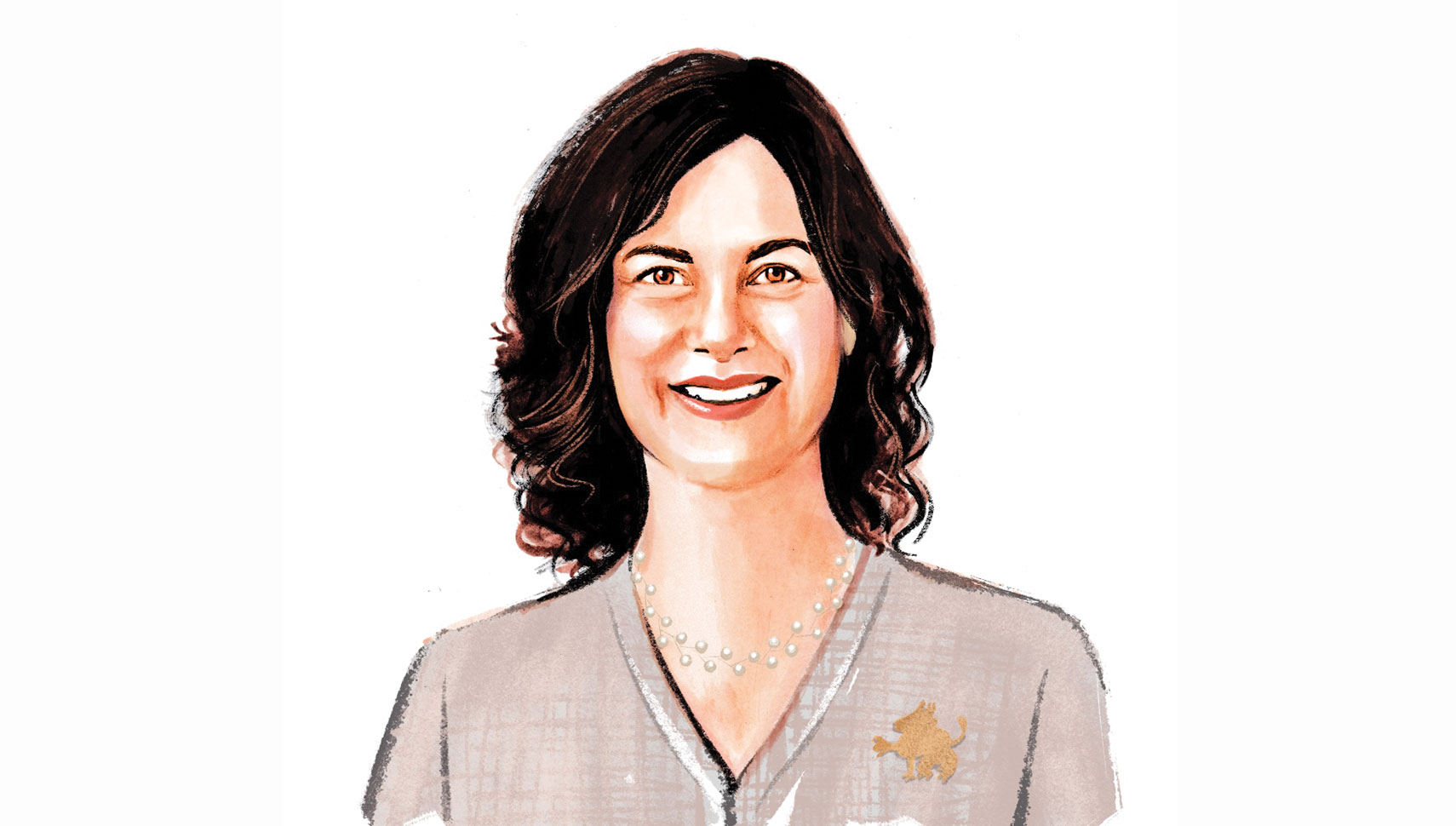Then & Now
May 12, 2023
By
Katherine A. Rowe

I am writing this column on the heels of a gloriously packed Traditions Weekend. Thunderstorms could not dampen the spirits of hundreds of alumni returning to alma mater. Over a weekend of fellowship and fun, we exchanged anecdotes from “back then.”
Alumni from the Class of 1973 recounted the construction of W&M Hall (now Kaplan Arena), as the building heads into a major renovation, supported by our All In campaign. They were delighted to learn that the trend of “Mary & William” T-shirts, in vogue following a campus visit from Gloria Steinem, came back in style during the centennial of coeducation. As I listened to their stories, I was struck by the throughlines of our conversations. Today’s students, like the alumni I spoke with, understand what it is like to study at a moment of intense national questioning and debate about social and political issues.
The Class of 1973 attended college in the upheaval of the Vietnam War and the draft. The Class of 2023’s college years have been marked by pandemic and massive disruption in artificial intelligence. Conversations about our country’s democratic values of equality and free speech are just as necessary today in the lead-up to the 250th anniversary of the Declaration of Independence as they were at the bicentennial. Military and veteran education continues to be a top priority today, with the new Center for Military Transition housed in the Raymond A. Mason School of Business.
It remains to be seen whether Patton Oswalt ’91, D.A. ’23 will quote the late Chief Justice Warren E. Burger when he addresses our 2023 grads later this month. Yet the closing words of Burger’s 1973 Commencement speech are as applicable now as they were 50 years ago: “This tradition of ordered liberty is the foundation of our country and, now, for the next 40–50 years, [you] will be the trustees of that great tradition.”
Whether members of the Class of 2023, 1973 or 1773, W&M’s students are outwardly turned, carrying a clear sense of duty toward their communities and the betterment of the world. That’s why W&M’s vision states: “People come to William & Mary wanting to understand and change the world — and together we do.”
The enduring nature of that vision has enabled W&M to lead in powerful ways for 330 years. We understand the moment that we are in while seeing the possibilities ahead.
Here are three examples from the history books: In the late 18th century, W&M pioneered the study of law in the United States. This innovation was foundational to our democracy, addressing the urgent need to train leaders for a new nation. In the late 1800s, W&M began certifying teachers to prepare talented educators for the commonwealth’s early public school system. And the surge of interest in the study of business post-World War II ultimately fueled the creation of the business school (the Class of 1973 recalls being among the first undergraduates eligible to graduate from the business school).
No institution is better prepared to educate students for lives as professionals and citizens in our modern, pluralistic democracy than W&M. That is because we have been doing it for centuries.
Over the past year, these columns have explored how W&M continues to evolve to excel, consistent with our Vision 2026 strategic plan. So far, we have looked at how W&M is leading transformations in ethical uses of data (a core liberal art for the 21st century), democracy (preparing students for active citizenship in a republic where freedom of expression enables open exchange of ideas) and careers (ensuring graduates succeed, in their first job and in the fifth).
Still to come: We will take a deep dive into how W&M is propelling research around water, drawing on the leadership of William & Mary’s Virginia Institute of Marine Science and our strengths in law, policy, economics, conservation, environmental science, geoscience and military education. (As I learned from the Class of ’73, W&M hosted the first university Earth Day.)
Here’s a preview: In April, the National Oceanic and Atmospheric Administration awarded VIMS an $8 million grant to implement a national program focused on protecting U.S. coastal waters from derelict fishing gear.
Alumni and students alike can take pride in how W&M continues to prepare students to flourish. The Wall Street Journal recently reported that W&M is the No. 5 public university for finance salaries, No. 9 for management consulting salaries, No. 11 for law salaries and No. 16 for tech salaries. The Princeton Review ranked W&M the nation's top public university for internships for the third year running.
We are building on 330 years of innovation to prepare our graduates to lead in the decades ahead, with gratitude for the generations of alumni, faculty and staff upon whose shoulders we stand.